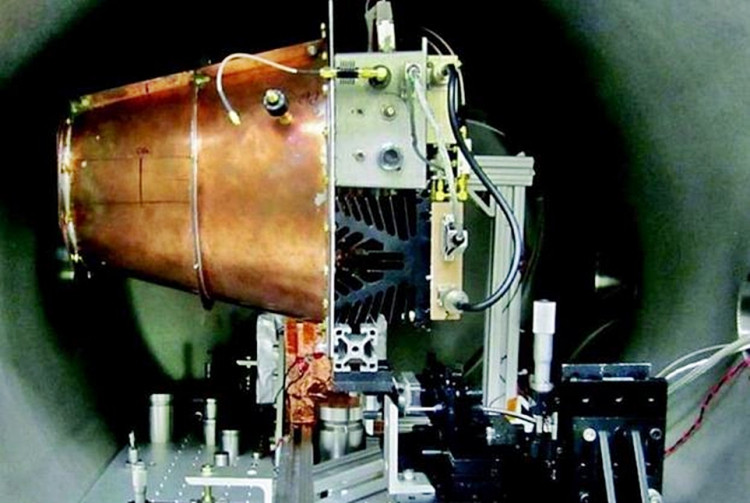Robert Shawyer, the British aerospace engineer credited with building the first EmDrive in 2001, revealed the U.S. Defense Advanced Research Projects Agency (DARPA) quietly became involved with his revolutionary engine in 2008.
Shawyer said DARPA attended the original 2008 EmDrive meeting at the Pentagon. He said he was then invited to a meeting with DARPA at their Arlington HQ to discuss an R&D program.
Shawyer also revealed he's been in contact with Mike Fiddy, manager of the Nascent Light-Matter Interactions (NLM) program. NLM is the latest DARPA initiative having to do with studying the EmDrive and other exotic propulsion technologies.
NLM will explore new and little-understood phenomena such as the apparent thrust generated by the EmDrive. Fiddy confirms DARPA previously funded work related to the EmDrive. NLM, however, is a fresh start, said Fiddy.
The NLM program concentrates on Nascent Light Matter interactions. 'Light' implies electromagnetic waves and not only visible light, according to Fiddy.
Another DARPA program manager noted that he and the agency maintained an interest in the EmDrive's progress well before China. DARPA didn't immediately fund an EmDrive project but remained acutely interested in it, said Jess Sponable, former DARPA program manager in charge of the XS-1 Spaceplane project.
He also emphasized the U.S. must beat the other guy to the punch line to ensure there will never again be another Sputnik moment.
Sponable said this warning applies, even where the underlying science is unclear or disputed, and especially if there is a risk that someone else, like China, might get there first. He warned that if DARPA doesn't gather this evidence and publishes the results, positive or negative, "then who in the U.S. government will?"
The United States federal government's modest $1.3 million investment in developing EmDrive technologies is only the first in what is expected to be a long string of future investments. Together, these investments will ensure America's continued geopolitical dominance in the world by giving it an unassailable advantage in far advanced space travel propulsion systems against all comers, especially China.
DARPA believes as much, and this explains its enduring interest in the controversial EmDrive propulsion system that violates all known laws of physics. But if the propulsion recorded in EmDrive tests aren't measurement errors but are the result of a new kind of hitherto unknown physics, then the U.S. stands to gain sole world leadership in this new field.
Only last month (October), DARPA awarded a $1.3 million grant to British physicist Mike McCulloch to prove his contentious "quantized inertia (QI) theory." McCulloch is a lecturer in geomatics (the math of positioning in space) at the University of Plymouth in the United Kingdom.
He's published over 20 papers on his QI theory, which is also known as Modified inertia by a Hubble-scale Casimir effect (MiHsC). McCulloch's is a radical theory with wide-ranging implications that affect everything from the galactic rotation to Dark Energy.
McCulloch claims QI can reconcile the EmDrive with existing physics. The grant to McCulloch includes developing theories to reconcile the EmDrive with known physics.
McCulloch's research will model and test the interaction of light with strongly resonant cavities (or an EmDrive). This model relies on a prediction from quantum theory that accelerating objects experience a thermal background known as "Unruh radiation."
McCulloch said he's approaching the DARPA project with a sense of opportunity. NLM will be a game changer because if we understand the thrust effect, then we can enhance it.
Instead of using microwaves that powered the original EmDrive, McCulloch's experiments to validate his QI theory will use light. One experiment will involve light traveling in a loop while another will use a laser bouncing off asymmetrical mirrors.
Shawyer said nobody has built this type of EmDrive before, but he thinks it has some advantages.
There is no reason why EmDrive should not work at optical frequencies, noted Shawyer. This approach will result in small EmDrive thrusters, with high specific thrust output.






